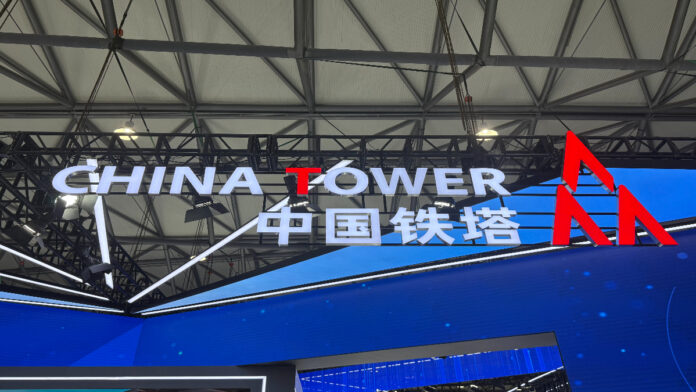China Tower says 5.6 million base stations and 2.1 million tower sites in China are being revamped for AI.
In sum – what to know:
Smart infra shift – China Tower is converting 2.1 million tower sites into intelligent, multi-use digital nodes for AI, IoT, drone operations and underground connectivity.
Green design – Solar, battery storage and smart energy systems are reducing emissions and creating emergency-ready, zero-carbon base stations.
Space integration – 70% of BeiDou satellite stations now rely on China Tower’s network, as it expands support for space-air-ground communications and next-gen mobility.
China Tower is reimagining its vast telecom infrastructure into a smart, secure and shared digital backbone to power China’s next stage of digital transformation, chairman Chi-Yong Chang said during his keynote at MWC Shanghai 2025.
The company’s 5.6 million base stations and 2.1 million tower sites are being made into into intelligent hubs for advanced applications such as edge computing, underground connectivity, AI-powered services and low-altitude drone networks, he said.
“With 900,000 new base stations built per year since 2014, we are enabling one of the highest-quality mobile networks in history,” Chang said. He said shared infrastructure and efficiency-focused design have allowed the company to reduce costs significantly while enhancing both coverage and resilience.
A major pillar of this transformation is the repurposing of towers into multi-use digital infrastructure. China Tower is now enabling a broader ecosystem – from IoT and smart cities to low-altitude aviation – while also supporting satellite internet operators. Notably, 70% of the BeiDou Navigation Satellite System’s ground stations now operate on China Tower’s sites.
Chang also highlighted the company’s clean energy strategy. Base stations are being outfitted with solar panels, battery storage and DC power supply systems, helping reduce emissions and meet zero-carbon goals. Smart energy management systems have been widely deployed to improve efficiency and sustainability.
Beyond ground-level connectivity, China Tower is expanding into digital infrastructure for underground environments. In Xiongnu, the company has rolled out indoor satellite navigation across 1.5 million square meters of underground parking, enabling vehicle guidance and tracking in complex subterranean spaces.
Emergency readiness is another priority. Chang said the company has developed seven layers of preparedness, including early warning systems, equipment stockpiles and rapid telecom recovery capabilities.
Looking ahead, China Tower is strengthening its role in space-air-ground integrated networks, supporting future innovations in autonomous transport and ultra-secure communications. “We want to make connectivity as seamless and essential as water, gas and air,” said Chang, calling for ecosystem-wide collaboration in standards, innovation and applications.
China Tower was formed in 2014 in 2014 through the consolidation of towers from China Mobile, China Unicom and China Telecom. The three operators currently hold stakes of 38%, 28.1% and 27.9%, respectively, with the remaining 6% owned by China Reform Holdings.

